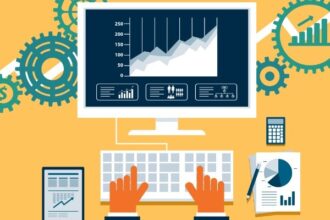Howard Dresner is a celebrity in the business intelligence industry, but most people at last year’s Tableau conference didn’t even recognize him when he showed up there.
Who needs BI? Tableau Software liked to think it had left BI behind. BI people, after all, were the control freaks who denied access to data. They sneered at Tableau’s “pretty pictures.” They cared more about data hygiene than data analysis.
Howard Dresner is a celebrity in the business intelligence industry, but most people at last year’s Tableau conference didn’t even recognize him when he showed up there.
Who needs BI? Tableau Software liked to think it had left BI behind. BI people, after all, were the control freaks who denied access to data. They sneered at Tableau’s “pretty pictures.” They cared more about data hygiene than data analysis.
But there he was. Stephen Few spotted him in the audience a few minutes into his keynote and paused to wonder if it was really him. Tableau vice president of marketing Elissa Fink welcomed him. I and some others said hello. Mostly he wandered alone.
But he’s coming back this year — to speak. He’ll be among 10 on the “experts track” at the Tableau Customer Conference in Las Vegas. Others include BI veteran Claudia Imhoff, Cindi Howson of “BI Scorecard,” and Performance Dashboards author Wayne Eckerson.
They’re all worth listening to. But the one most Tableau people would feel at home with is Paul Kedrosky. Unlike the others, he’s not from the BI world at all. He’s an “investor, speaker, writer, media guy, and entrepreneur,” according to his blog’s “about” page. But I know him as the man who counts ladders.
At last fall’s Defrag conference in Boulder, he told about using the California Highway Patrol’s count of fallen ladders on freeways as a leading economic indicator. Who says data must come from conventional sources? He’s serious and creative, a mix Tableau people appreciate.
He’s written that we live in a “golden age of data visualization,” but I’ve found no elaboration. I’ll be listening for that.
As for the other nine “experts,” the first thing I’ll look for is the size of their audiences.








